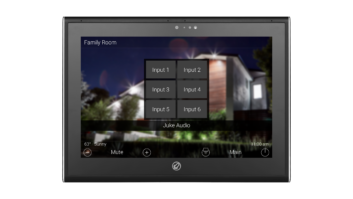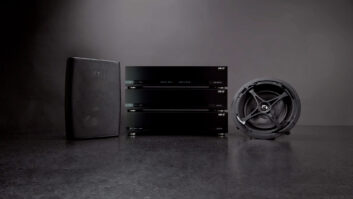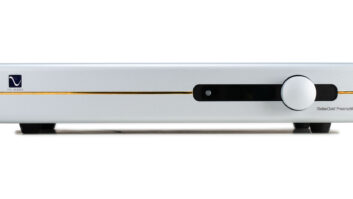Speaker manufacturers react to how People listen to music, learn about Products, and purchase goods

Whether or not you believe that Neil Young’s Pono portable audio player provides audio quality at resolution to justify its premium price tag, or if you think Jay-Z’s re-launched TIDAL music streaming service will appeal to consumers or just offer a better pay day for recording artists, there’s no denying that “audio” has become a part of the public conversation. And where there’s debate and even confusion about new consumer electronics products and technology, there is an opportunity for custom integrators to step in and provide guidance.
The biggest issue, however, remains the changing nature in the way people listen to music, learn about products, and purchase goods.
Streaming is certainly a predominant technology trend driving product developments from audio manufacturers in the custom install market, but there are other market opportunities being addressed by these companies as well, including multi-room wireless audio, immersive 3D home theater formats, demographic shifts in the client base, and improved industrial designs that appeal to a broader audience.
“The biggest trend this year and for the foreseeable future is streaming audio,” said Cary Christie, founder and chief designer for Artison. “With all the debates about options and who will pay for what services, the bottom line is that streaming is not only here to stay, but it will shape the products and technologies that are introduced over the coming years.”
Christie said that the success of streaming services is also indicative of the consumer’s demand for the elimination of all wires, which in turn leads design and manufacturing companies like Artison to focus on the development of products that take full advantage of the ever-widening pipe. “A service like TIDAL, for example, may come out ahead in the high-res market, or the winner may be a mainstay like Apple or a player that has yet to bubble to the surface,” Christie added. “In any case, we’re in a unique position to help dealers capitalize on the trend, no matter which content providers are successful.”
As streaming continues to grow as the end users’ preference for music and home theater entertainment, Christie said, Artison is focusing more on offering CI professionals products that resonate in a wireless world.
Crestron senior residential marketing manager, Delia Hansen, agreed that streaming audio has been one of the “biggest technical transformations” for the industry. “The ability to access music, movies, and other content from a device that fits into your pocket is huge,” she said. “Instead of putting all your content on a server that is tucked away, everything is in the cloud and easy to obtain, which is the powerful driving force behind the popularity and adoption of streaming. Now that consumers have access to music everywhere, why wouldn’t they want to listen to music everywhere?
According to Hansen, Crestron has embraced this trend by developing its personal network stream player (NSP-1) that gives each person within a home access to just his or her favorite services, individual playlists, and music libraries from a single user interface. Streaming tuner cards place every internet radio station at a consumer’s fingertips, and Crestron offers solutions for managed servers and terrestrial AM/FM.
Crestron also remains committed to high audio quality. “The term Hi-Fi gets thrown around, but when you dig into the specs and look at dynamic range and total harmonic distortion, no one comes close to the quality of our flagship amplifiers in the multi-room audio category,” Hansen said. “Better yet, the audio elements are all part of a complete Crestron solution; control of every system within a home, all in a single cohesive system.”
Frank Sterns, Sony’s VP for AV Specialty/Custom Installation, also confirmed that his company is focused on similar areas of opportunity for audio. “The first is high-res audio and its vast improvement in sound quality, and the second is the integration and automation of wireless multi-zone systems like Sonos with our new ES AVR lineup,” he said.
Core Brands is focused more on the increasingly popular multi-room/distributed audio category, where it has “stepped up its commitment,” according to director of marketing communications Bill Hensley, with the recent introduction of the SpeakerCraft MRA-664 multi-room audio controller. In addition to the trend toward streaming sources, the new object-based surround audio platforms like Dolby Atmos represent another important development for Core Brands and one with particular demands for sonic performance.
George Haight, product specialist for Kevro International, also pointed to immersive 3D audio formats from Dolby Atmos, Auro 3D, and DTS:X as the “biggest technical trend in the audio world today.”
“In terms of product development for these technologies, we believe that we already have the ideal solution in our in-wall and in-ceiling products fitted with our Inverted Dual Concentric (IDC) module,” he said. “Speakers equipped with the IDC module are wide dispersion mono-poles which are exactly what is called for by these formats. Rather than using modules on top of our floor-standing speakers and the ceiling to disperse the sound, we do it just like they do in actual movie theaters and studios. Many of Monitor Audio’s 200 and 300 Series speakers feature this innovative design.”
Speaking more broadly, James Loudspeaker president, Mark Schafle, said that his company is seeing “a marked increase in demand for high-performance products that can be built to suit, rather than off-the-shelf products.”
James Loudspeaker’s California-based design and manufacturing facility is geared to satisfy the demand for customized solutions in real time for its base of integrators. “As a company, we have earned a reputation as the solutions provider with experience in delivering superb sound despite décor challenges and architectural demands,” Schafle said. “We have expanded our prototype manufacturing and product-finishing facilities to shorten lead times and increase efficiency, so that we can deliver competitively priced premium solutions quickly to our integrators.”
Brian Azzano, sales manager of Stealth Acoustics, provided a more holistic take on how his company is addressing audio trends. “I believe that the biggest audio technical trend and market opportunity that is currently driving Stealth’s development processes is centered on the principle of offering a complete solution for the integrator,” he said. “As technology continues to develop and become more complex within the CI market, integrators will continually be looking for unique products that can add value to their installations.”
At Thiel, a company in the midst of “reimagining” its brand and product line, SVP of sales and marketing, Paul Fisher, said they are also noting many of the same trends influencing the premium loudspeaker marketplace, such as “a demand for sleek, thoughtful industrial design, as well as adaptation to new surround formats such as Dolby Atmos.”
Beale Street Audio executive director Mark Cichowski believes that, from a market perspective, dealers are looking for differentiators in the architectural speaker market.
“The category has been so stale for so long that an innovation like Sonic Vortex presents a real opportunity to stand out,” he said.
Specifically, the company’s Sonic Vortex speaker technology offers a twist on ported transmission line design where the main port is separated into multiple tuned “fins” that compress and move air at a high velocity without port noise. Results are dramatically enhanced sound, flatter frequency response, 6 to 9 dB boost in the mid-lower bass, increased cabinet rigidity, amplifier-friendly design, and dynamic flexibility.
For Gary Yacoubian, president and CEO of SVS, the answer to the audio trend question had more to do with changing or evolving customer demographics. From a philosophical perspective, he said, every product that his company designs is meant to captivate younger, broader, and perhaps more mainstream audiences to the joys of immersive audio experiences by using future-facing market engagement and fighting for the most extreme price/value propositions.
“I have extensive conversations with the SVS engineering team over what strategy makes some of the great audio products in the world, and what has undermined them,” he said. “We have no intention of bringing anything to market that doesn’t already hugely surpass the typical benchmarks of performance/cost.”
Wrapping up the discussion with a nice shiny bow, Greg Stidsen, director of technology and product planning for the Lenbrook brands of NAD, PSB, and Bluesound, said the audio trend question gets right to the heart of what makes this such a challenging market right now.
“We are in the midst of a tectonic shift in the way people listen to music, learn about products, and purchase goods,” he said. “Digital technology and the internet have changed everything about this business. On top of that, we have a major demographic shift happening, from our core baby boomer customer, to gen X and the millennials.”
Stidsen said that so-called “digital natives” have a different set of expectations for product performance and functionality that must be met for a brand to be considered relevant. To commemorate its 40th anniversary, NAD and PSB added significant new products and product categories created specifically for digital natives.
“We have made major investments in innovative, new digital technology, fully embraced high-res audio, and actually redefined what a high-performance audio system looks and sounds like,” Stidsen added. “We have also, at the same time, maintained a strong presence in our traditional product categories, adding new features that address new patterns of music consumption while maintaining core values of performance and simplicity.”
Jeremy J. Glowacki is editorial director of Residential Systems.







